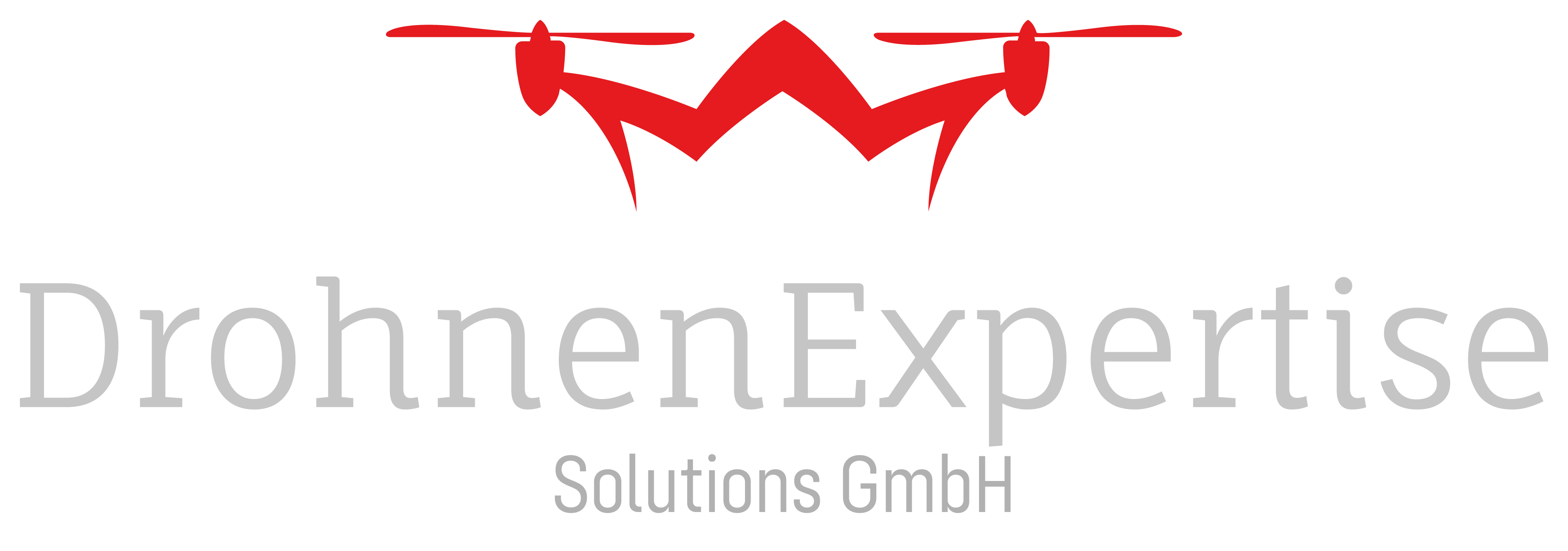We measure your track systems, roofs, open spaces
Measurement by drone – calculation of lengths, areas and volumes
How large is the area to be built on really? How will the new building fit into the surroundings? Do the planned dimensions fit? Do you know that? You can carry out your measurements laboriously using lasers and other measures. Or we can fly over the site or object with drones, film and photograph, create 3D point clouds, orthophotos and 3D models.
From this you can derive terrain models, models for visualizations, as-built plans with contour lines, monitoring and evidence documentation.
In construction and project management, drone surveying provides critical data that is important for building information modeling (BIM). If we accompany the construction project by drone, continuously, the phases can be compared with earlier phases. This allows you to identify discrepancies between the plan and reality at an early stage.
This reduces design errors, omissions and reworking. And save costs. Drone surveys are now an important part of modern construction project monitoring.
What type of surveying are drones suitable for?
- Land surveys
- Photogrammetry
- 3D mapping
- topographic surveys
In which areas is surveying by drone useful?
- Architecture
- Restoration
- Cross-country tests
- impassable areas
- Documentations
- Production of three-dimensional objects
Surveys provide important information for your decision.
This concerns::
- construction site planning,
- the planning and maintenance of infrastructure,
- Production of three-dimensional objects
- up to the representation of property boundaries and more.
What are the advantages of surveying with drones?
Advantages of surveying with drones
Drone surveying works without lasers and light pulses. Instead, the drone takes pictures at regular intervals. We refer to this non-contact measurement method as photogrammetry.
The object to be measured is digitally photographed from different angles and using specific measuring points. The images are transferred to specific software and processed further.
The software uses mathematical calculations to generate an exact model – a 3D point cloud. Displacements and deformations of points and components can be easily identified.
Advantages of drone surveying in detail
- Even hard-to-reach areas can be reached Areas that are difficult to access, such as railroad tracks, can be flown over safely. People do not have to climb rough terrain or expose themselves to other risks.
- No work interruption necessary Plant and machinery can continue to work during the drone survey. Access roads, paths and sites do not have to be closed.
- Precise measurement
Thanks to sophisticated optical sensors, the so-called RTK-GPS sensors (Real Time Kinematic), the drone images are very precise. This results in accuracies of one to two centimetres and a resolution of less than one centimetre per pixel and below for orthophotos. If orthophotos are taken by aircraft, the resolution is 20 to 40 centimetres per pixel. Even with drones without RTK sensors, we achieve an accuracy of five to ten centimeters. - Repeatability & documentation
Surveying with drones is easy to repeat. This enables target/actual comparisons. This means that changes can be documented very well over time. - Data evaluation & models
The orthophotos, 3D point clouds and models created using drone surveying are used to take stock and generate a digital terrain model, which we are happy to provide to you in a suitable data format.
What can we help you with?
Write to us at info@drohnenexpertise.de
Or give us a call: +49 152 – 21 76 67 24
Let’s have an initial, non-binding discussion to find out how we can support you.
Frequently asked questions about surveying with a drone
What are the advantages of using drones in surveying technology?
- Time and cost efficiency
- Safety and security
- High resolution and accuracy
- flexibility
- Real-time data
- Environmental friendliness
- Automated processing
- Integration into existing systems
What surveying work is more effective with drones?
Topographic surveying
- Cadastral surveying
- Construction and infrastructure surveying
- Inspection and maintenance
- Environmental and nature conservation
- Archaeology
- Agriculture
How accurate is the data captured by drones?
Drone recordings provide very precise and high-resolution data. This depends on the quality of the camera, the flight altitude and the environmental conditions.
What legal regulations apply to the use of drones in surveying technology?
The legal regulations for the use of drones vary depending on the country and region. In most cases, permits must be obtained in addition to licenses and certain driving licenses. Certain flight altitude restrictions or operating regulations often apply depending on the location. It is important to find out about the applicable laws and regulations in your country before using drones for surveying purposes.
Can any type of drone be used for surveying work?
No, high-performance drones are useful for precisely flying over and recording buildings and other objects. Data can only be evaluated precisely thanks to first-class camera quality, GPS accuracy and software compatibility. Professional drones have been developed for this purpose.
Special surveying hardware is also required to be able to survey with the drone.
How is the data collected by drones processed and analyzed?
Special software processes and analyzes the captured aerial images. It uses them to develop 3D and thermographic models. Geographic information systems (GIS) and computer-aided design software (CAD) can also be used to further process and analyze the data. Automated processes, such as photogrammetry and LiDAR (Light Detection and Ranging), extract high-precision measurements and mapping from the drone data.
Can drones be used in bad weather?
Some professional drones can also fly and store data in less favorable weather conditions such as rain, wind and colder temperatures. The quality of the data fluctuates in poor conditions. In addition, the drone pilot should be appropriately trained to be able to better assess dangers such as icing of the rotor blades and thus a possible crash of the drones. More experienced pilots are more likely to recognize critical situations.
